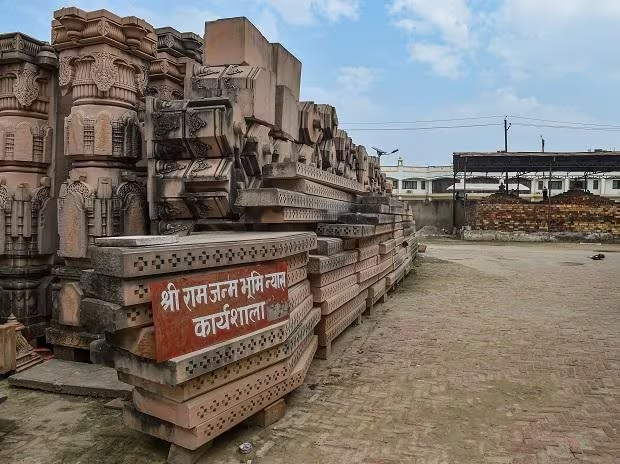Introduction
In a historic turn of events, the Supreme Court’s judgment paved the way for the construction of the grand Ram Temple in Ayodhya, where the idol of infant Lord Ram, known as Ram Lalla, had been placed in a small tent for decades. As the completion of the temple nears, it stands as a testament to not only religious significance but also architectural and engineering brilliance.
Construction Techniques: Stone Over Iron for Earthquake Resistance
To ensure the temple’s resilience against earthquakes, the architects opted for a unique approach, steering away from conventional construction materials. Professor Ramanchrala Pradeep Kumar, Director of the CSIR-Central Building Research Institute (CBRI), Roorkee, emphasised the use of stone instead of iron. Stone, with its extended lifespan and earthquake-resistant properties, became the primary choice. The temple’s structure, free from iron, eliminates the risk of rusting and attests to a commitment to longevity and durability.
The Unique Stone Construction: A Groovy Affair
Every stone used in the Ram Temple undergoes a meticulous process, featuring a groove cut into it. Subsequently, another stone is placed into the groove, creating a solid and interlocked structure. This intricate technique not only adds to the visual appeal but also contributes to the temple’s stability. Notably, no cement is used between the stones, showcasing a reliance on the pure strength of the material.
The Pink Stone from Bansi Paharpur
All the pink stones used in the primary construction of the Ram Temple hail from Bansi Paharpur in Bharatpur, Rajasthan. Chosen for its strength and long lifespan, the pink stone complements the temple’s aesthetic while ensuring its endurance against the test of time.
Overcoming Foundation Challenges: Rolled Compact Concrete
The temple faced a unique challenge during soil testing, revealing utterly loose sand beneath the intended construction site, unsuitable for a foundation. To address this issue, a collaboration with specialists from various institutions and Larsen & Toubro (L&T) was initiated. A groundbreaking solution involved removing 14 meters of loose sand, followed by the placement of 56 layers of Rolled Compact Concrete—a unique mix that transforms into rock over time. This innovative foundation technique ensured the stability of the temple against challenging soil conditions.
Nagara Style Architecture: Honoring Tradition
The Ram Temple proudly follows the Nagara style of architecture—one of the three architectural styles of Hinduism in North India. Renowned for its unique characteristics, this style, devoid of iron, pays homage to the rich heritage between the Vindhyas and the Himalayas. Other iconic temples, such as Khajuraho Temple, Somnath Temple, and Sun Temple of Konark, share this distinguished Nagara style.
As the Ram Temple nears completion, it stands as a testament to the fusion of devotion and engineering ingenuity. From the earthquake-resistant stone construction to the intricate interlocking technique and the use of traditional Nagara style architecture, the temple is not just a religious symbol but a marvel that reflects India’s rich cultural and architectural heritage. Come January 22, the consecration of the idol in the almost complete Ram Temple will mark the realisation of a dream and the dawn of a new chapter in Ayodhya’s history.
Feature Image courtesy: Business Standard
Chandrakant Sompura’s 32-Year Quest – Does Ayodhya’s Ram Temple Emerge as His Magnum Opus?





